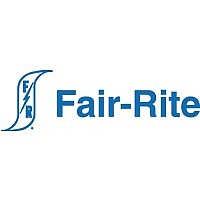2673021801 Fair-Rite, 2673021801 Datasheet - Page 176

2673021801
Manufacturer Part Number
2673021801
Description
EMI/RFI Suppressors & Ferrites Z=94ohms @ 10MHz
Manufacturer
Fair-Rite
Datasheet
1.2743037447.pdf
(193 pages)
Specifications of 2673021801
Shielding
Unshielded
Test Frequency
100 MHz
Product
Ferrite Beads
Impedance
95 Ohms
Operating Temperature Range
- 55 C to + 125 C
Termination Style
SMD/SMT
Lead Free Status / RoHS Status
Lead free / RoHS Compliant
- Current page: 176 of 193
- Download datasheet (7Mb)
176
Fair-Rite Products Corp.
Phone: (888) FAIR RITE / (845) 895-2055
Technical Information
Figures 6 through 10 show for these five suppression materials
the complex permeabilities m'
For all these materials at low frequencies m'
frequency increases m"
eter whence the biggest contributor to the overall impedance. At
the low frequencies where m'
mostly inductive and rejects EMI signals. At the higher frequen-
cies where m"
impedance will become more and more resistive and absorbs
the conducted EMI.
Table 1 lists Fair-Rite’s suppression materials, suggested oper-
ating frequency ranges and the test frequencies for the five
suppression materials. The recommended materials will pro-
vide the highest combination of the primary material character-
istics m'
Table 1
Making the material selection is the first step in eliminating
conducted EMI problems. To make this material selection it is
imperative that the frequency or frequencies of the unwanted
noise are known. This needs not be an exact figure; an approxi-
mation will be sufficient. From the EMI frequency the material can
be selected. It should be made clear that several environmental
conditions will have to be addressed before this selection be-
comes final.
Environmental Conditions
As shown in Figures 6 through 10, the m'
function of frequency. However, several environmental condi-
tions will also affect these primary material parameters. The most
significant ones are temperature and dc bias.
Changes in the combination of m'
strictly a material characteristic which is not affected by the core
geometry. The graphs in Figures 11 through 15 show the per-
centage change in impedance as a function of temperature when
compared to room temperature. These typical changes in imped-
ance will be applicable for all components made from these
materials. Designers can use these graphs to evaluate perfor-
mance of specific components versus temperature.
Material
73
31
43
44
61
s
(888) 324-7748
and m"
Frequency Range
1 –25 MHz
1 – 300 MHz
20 – 300 MHz
20 – 300 MHz
200+ MHz
s
s
becomes the more significant parameter the
over that frequency range.
s
becomes the dominant material param-
10 – 25 MHz
10 – 25 – 100 MHz
25 – 100 MHz
25 – 100 MHz
100 – 250 MHz
Test Frequencies
s
s
and m"
is highest the suppression core is
s
and m"
s
as a function of frequency.
s
s
due to temperature is
and m"
s
is highest but as the
Comments
Small parts only
Large parts only
Wide range of parts
High resistivity
For VHF designs
• FAX: (888) FERRITE / (845) 895-2629 • www.fair-rite.com • E-Mail: ferrites@fair-rite.com
s
will vary as a
(888) 337-7483
P.O. Box J,One Commercial Row, Wallkill, NY 12589-0288
Note: (914) Area Code has changed to (845).
10000
Figure 7
Figure 6
10000
1000
1000
100
100
10
10
10
10
5
5
Complex Permeability vs. Frequency
Measured on a 2673000301 bead using
the HP 4284A and the HP 4291A.
Complex Permeability vs. Frequency
Measured on a 17/10/6mm toroid using
the HP 4284A and the HP 4291A.
10
73 Material
31 Material
10
6
Frequency (Hz)
6
Frequency (Hz)
10
10
7
7
14th Edition
10
10
8
8
Related parts for 2673021801
Image
Part Number
Description
Manufacturer
Datasheet
Request
R
Part Number:
Description:
NCP5007Two Phase PWM Controller with Integrated Gate Drivers
Manufacturer:
ON Semiconductor
Datasheet:

Part Number:
Description:
EMI/RFI Suppressors & Ferrites LF Z=95OHM @ 100MHz
Manufacturer:
Fair-Rite

Part Number:
Description:
EMI/RFI Suppressors & Ferrites LF Z=47OHM @ 100MHz
Manufacturer:
Fair-Rite
Datasheet:

Part Number:
Description:
EMI/RFI Suppressors & Ferrites Z=300 @ 100MHz
Manufacturer:
Fair-Rite
Datasheet:

Part Number:
Description:
EMI/RFI Suppressors & Ferrites Z=365 OHM @ 100 MHz
Manufacturer:
Fair-Rite
Datasheet:

Part Number:
Description:
EMI/RFI Suppressors & Ferrites LF Z=133OHM @ 100MHz T/R
Manufacturer:
Fair-Rite
Datasheet:

Part Number:
Description:
EMI/RFI Suppressors & Ferrites Z=132 OHM @ 100MHz
Manufacturer:
Fair-Rite
Datasheet:

Part Number:
Description:
EMI/RFI Suppressors & Ferrites Z=33 OHM @ 100MHz
Manufacturer:
Fair-Rite
Datasheet:

Part Number:
Description:
EMI/RFI Suppressors & Ferrites LF Z=78OHM @ 25MHz
Manufacturer:
Fair-Rite
Datasheet:

Part Number:
Description:
FERRITE CORE, CYLINDRICAL
Manufacturer:
Fair-Rite
Datasheet:

Part Number:
Description:
FERRITE BEAD, SMD, 350mOHM, 400mA
Manufacturer:
Fair-Rite
Datasheet:

Part Number:
Description:
FERRITE CORE, CYLINDRICAL
Manufacturer:
Fair-Rite
Datasheet:

Part Number:
Description:
FERRITE BEAD, SMD, 1.4mOHM, 5A
Manufacturer:
Fair-Rite
Datasheet:

Part Number:
Description:
CHIP BEAD,Ferrite
Manufacturer:
Fair-Rite
Datasheet:











